Navigating retrenchments is a sensitive, complex process – one that goes far beyond the logistics of reducing headcount. At Justine Del Monte & Associates, our approach is to minimise litigation risk while ensuring that proper and efficient workplace practices, procedures and controls are implemented during this process.
Recent retrenchment announcements from major retailers Superbalist and Pick n Pay have underscored the importance of handling workforce reductions with care and strategic foresight. As businesses face mounting financial pressures, retrenchments may seem unavoidable – however, approaching these decisions with empathy and a clear, transparent process can make all the difference. Retrenchments done correctly don’t just meet legal requirements, they acknowledge the often unavoidable human impact, protect the company’s reputation and future, and foster trust among remaining employees.
In this post, we explore why a well-thought-out approach to retrenchment is crucial, detailing essential steps to ensure the process is compliant and meets the needs of all parties.
Key Sections of the Labour Relations Act for Retrenchment
Retrenchment, or employee dismissal due to operational needs, is regulated under Section 189 of the South Africa’s Labour Relations Act 66 of 1995 (LRA), while Section 189A pertains to large-scale retrenchments involving employers with more than 50 employees. In these cases, the LRA requires that, if a significant portion of the workforce is at risk, additional guidelines apply to ensure fairness and transparency in the process. This includes consulting for a minimum of sixty (60) days and engaging a CCMA commissioner to facilitate consultations between the parties.
Initiating the Consultation Process
When an employer contemplates the retrenchment of one or more employees, the LRA requires consultation to begin promptly. Employers must issue a written notice, generally called an “invitation to consult,” outlining the reasons for the retrenchment and other relevant details. This notice, which should be provided as early as possible, allows employees to prepare and engage meaningfully in the consultations.
The Purpose of Consultation
The consultation process is described in the LRA as a “meaningful joint consensus-seeking process” between employer and employee. The intention is that employers and employees should collaboratively explore, inter alia, ways to avoid retrenchments such as early retirements, reducing salaries , or restructuring roles. If retrenchments are unavoidable, discussions should focus on minimising the number of dismissals, agreeing selection criteria, and establishing fair severance pay. Employers are legally required to engage in these topics under Section 189(2) of the LRA.
Employee Participation: Rights and Responsibilities
Employees have the right to participate actively and constructively in the consultation process. This includes the right to request and receive relevant information that may impact the retrenchment process.
If information is lacking or critical details are missing, employees are encouraged to raise these points during consultations. Employers, in turn, must respond to these questions and suggestions to facilitate a transparent and productive discussion.
Information Disclosure and Employer Obligations
Under Section 189(3), the employer must provide certain information in the invitation to consult, including the reasons for retrenchment, the number of employees likely to be affected, and proposed criteria for selection. This information allows employees to understand the necessity of the retrenchment and engage in the consultation process effectively.
Employers are obligated to respond to representations made by employees or unions during consultations. If the employer disagrees with an employee’s proposal, they must provide reasons for their decision. This ensures both parties contribute meaningfully to the discussions and fosters a sense of respect and collaboration, even during challenging times.
Challenges in Practical Application
One issue that frequently arises is that employers often issue invitations to consult as a mere formality, rather than a genuine attempt at collaboration. In these instances, consultations risk becoming a “tick-box” exercise, failing to meet the requirements of the LRA.
For employers, a well-prepared invitation to consult serves as a foundation for a fair retrenchment process. It not only demonstrates compliance with legal requirements but in the process of drafting it can also reveal alternative solutions and risks that may otherwise go unnoticed.
Fairness and Compliance in Retrenchment
Ultimately, the goal of the retrenchment consultation process is to balance the operational needs of the business with the rights and well-being of its employees. The Code of Good Practice on Dismissal Based on Operational Requirement encourages the employer to in all good faith keep an open mind throughout and seriously consider proposals put forward. Employers are advised to treat employees respectfully, disclosing relevant information timeously and considering any reasonable proposals. Employees, meanwhile, should take an active role, raising any concerns promptly and working with the employer to seek possible solutions .
Our services
Justine Del Monte & Associates specialises in all aspects of employment and labour law. Whether you are an employer or an employee in the retrenchment process, trust us to facilitate the consultation process in a way that honours both the spirit and the letter of the law. Contact us to discuss your needs.
Navigating retrenchments is a sensitive, complex process – one that goes far beyond the logistics of reducing headcount. At Justine Del Monte & Associates, our approach is to minimise litigation risk while ensuring that proper and efficient workplace practices, procedures and controls are implemented during this process.
Recent retrenchment announcements from major retailers Superbalist and Pick n Pay have underscored the importance of handling workforce reductions with care and strategic foresight. As businesses face mounting financial pressures, retrenchments may seem unavoidable – however, approaching these decisions with empathy and a clear, transparent process can make all the difference. Retrenchments done correctly don’t just meet legal requirements, they acknowledge the often unavoidable human impact, protect the company’s reputation and future, and foster trust among remaining employees.
In this post, we explore why a well-thought-out approach to retrenchment is crucial, detailing essential steps to ensure the process is compliant and meets the needs of all parties.
Key Sections of the Labour Relations Act for Retrenchment
Retrenchment, or employee dismissal due to operational needs, is regulated under Section 189 of the South Africa’s Labour Relations Act 66 of 1995 (LRA), while Section 189A pertains to large-scale retrenchments involving employers with more than 50 employees. In these cases, the LRA requires that, if a significant portion of the workforce is at risk, additional guidelines apply to ensure fairness and transparency in the process. This includes consulting for a minimum of sixty (60) days and engaging a CCMA commissioner to facilitate consultations between the parties.
Initiating the Consultation Process
When an employer contemplates the retrenchment of one or more employees, the LRA requires consultation to begin promptly. Employers must issue a written notice, generally called an “invitation to consult,” outlining the reasons for the retrenchment and other relevant details. This notice, which should be provided as early as possible, allows employees to prepare and engage meaningfully in the consultations.
The Purpose of Consultation
The consultation process is described in the LRA as a “meaningful joint consensus-seeking process” between employer and employee. The intention is that employers and employees should collaboratively explore, inter alia, ways to avoid retrenchments such as early retirements, reducing salaries , or restructuring roles. If retrenchments are unavoidable, discussions should focus on minimising the number of dismissals, agreeing selection criteria, and establishing fair severance pay. Employers are legally required to engage in these topics under Section 189(2) of the LRA.
Employee Participation: Rights and Responsibilities
Employees have the right to participate actively and constructively in the consultation process. This includes the right to request and receive relevant information that may impact the retrenchment process.
If information is lacking or critical details are missing, employees are encouraged to raise these points during consultations. Employers, in turn, must respond to these questions and suggestions to facilitate a transparent and productive discussion.
Information Disclosure and Employer Obligations
Under Section 189(3), the employer must provide certain information in the invitation to consult, including the reasons for retrenchment, the number of employees likely to be affected, and proposed criteria for selection. This information allows employees to understand the necessity of the retrenchment and engage in the consultation process effectively.
Employers are obligated to respond to representations made by employees or unions during consultations. If the employer disagrees with an employee’s proposal, they must provide reasons for their decision. This ensures both parties contribute meaningfully to the discussions and fosters a sense of respect and collaboration, even during challenging times.
Challenges in Practical Application
One issue that frequently arises is that employers often issue invitations to consult as a mere formality, rather than a genuine attempt at collaboration. In these instances, consultations risk becoming a “tick-box” exercise, failing to meet the requirements of the LRA.
For employers, a well-prepared invitation to consult serves as a foundation for a fair retrenchment process. It not only demonstrates compliance with legal requirements but in the process of drafting it can also reveal alternative solutions and risks that may otherwise go unnoticed.
Fairness and Compliance in Retrenchment
Ultimately, the goal of the retrenchment consultation process is to balance the operational needs of the business with the rights and well-being of its employees. The Code of Good Practice on Dismissal Based on Operational Requirement encourages the employer to in all good faith keep an open mind throughout and seriously consider proposals put forward. Employers are advised to treat employees respectfully, disclosing relevant information timeously and considering any reasonable proposals. Employees, meanwhile, should take an active role, raising any concerns promptly and working with the employer to seek possible solutions .
Our services
Justine Del Monte & Associates specialises in all aspects of employment and labour law. Whether you are an employer or an employee in the retrenchment process, trust us to facilitate the consultation process in a way that honours both the spirit and the letter of the law. Contact us to discuss your needs.



